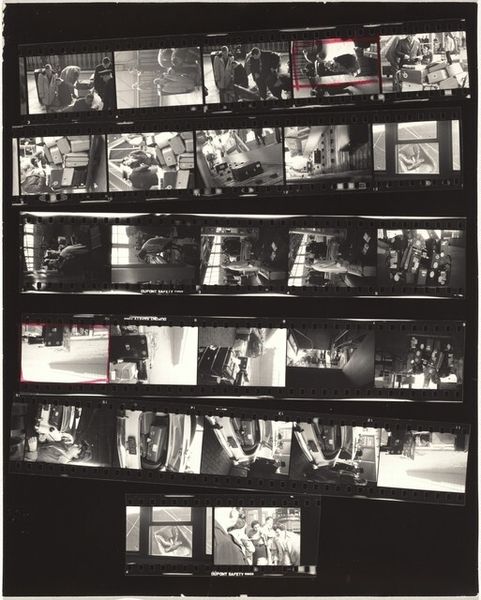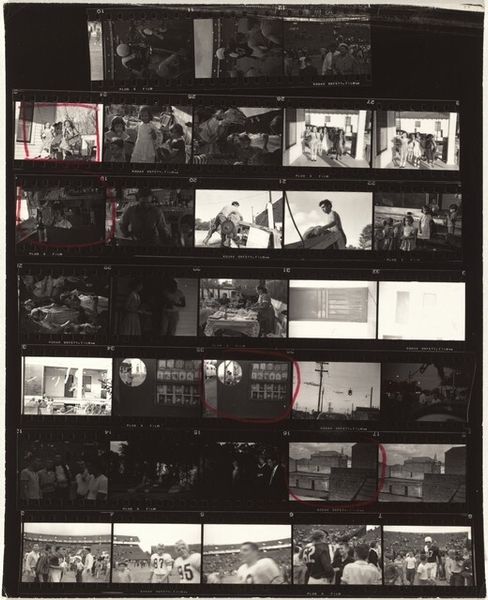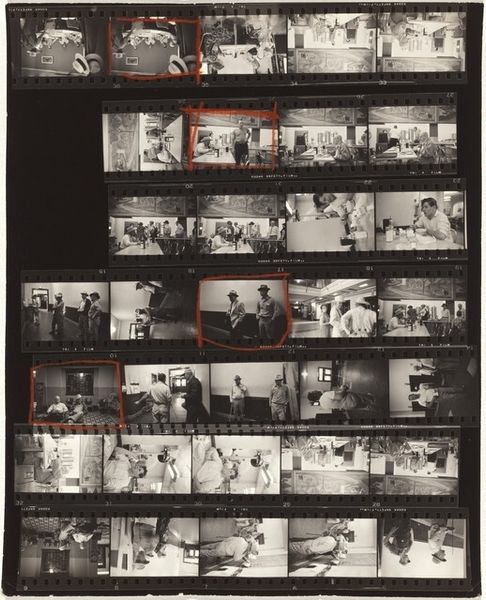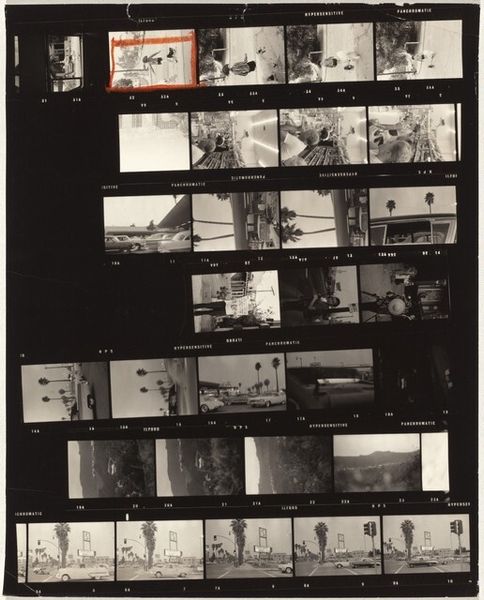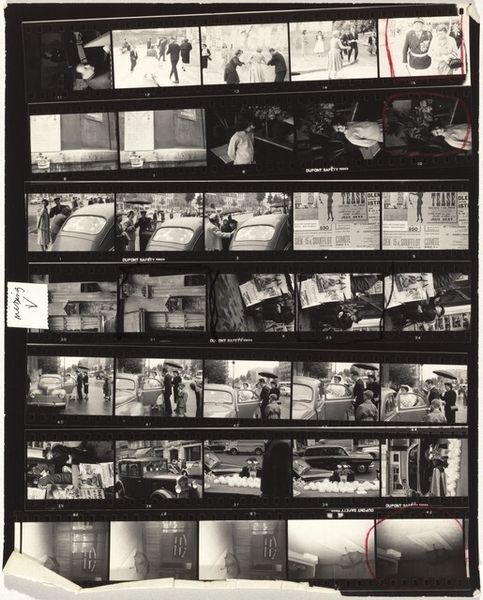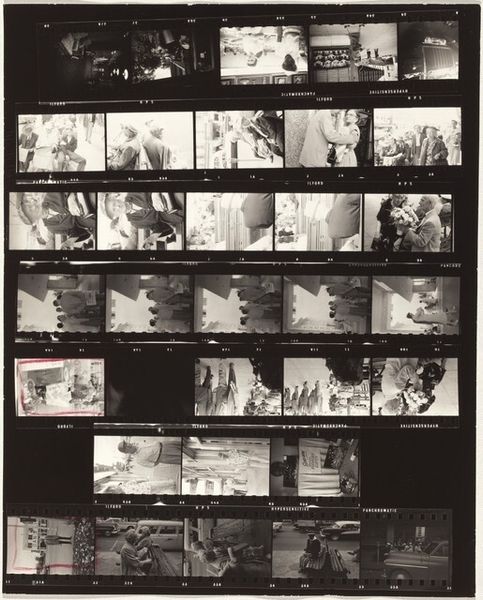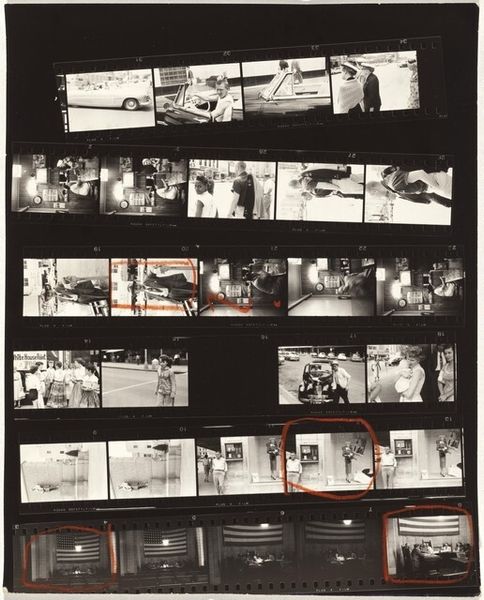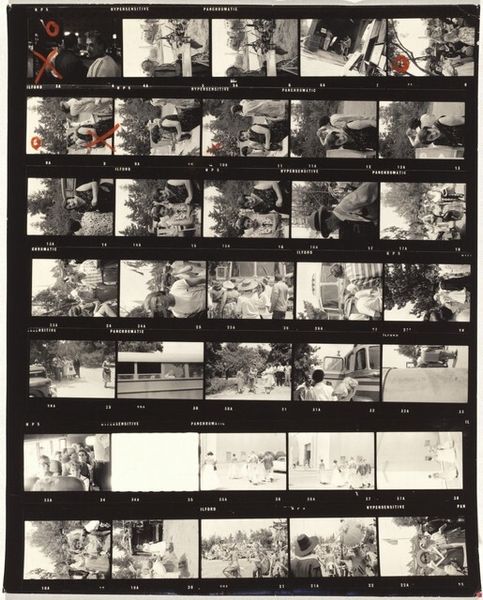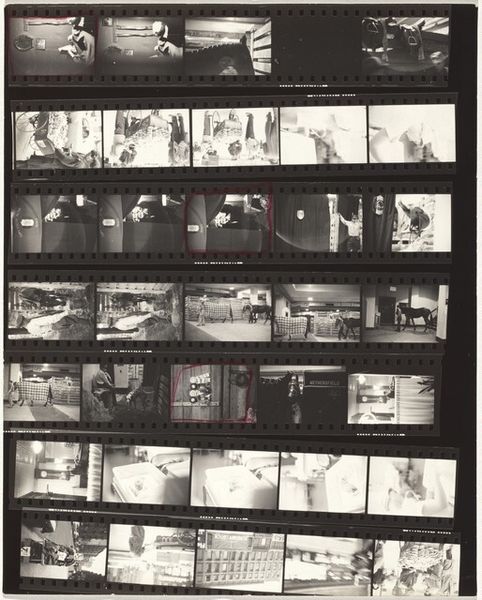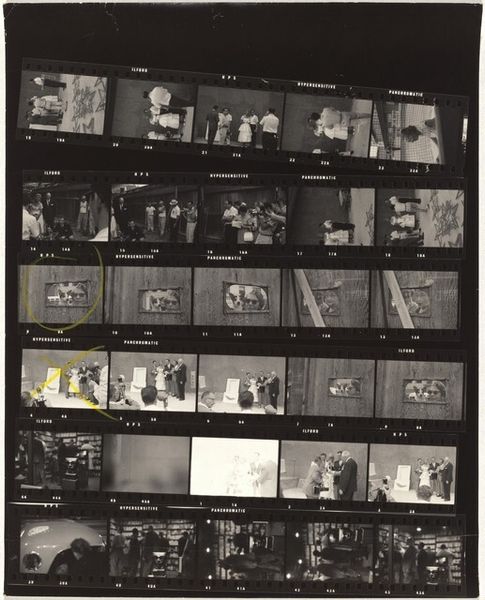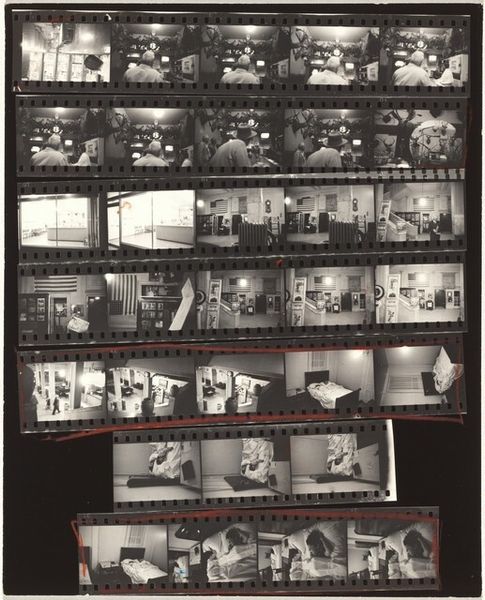
Dimensions: overall: 25.2 x 20.2 cm (9 15/16 x 7 15/16 in.)
Copyright: National Gallery of Art: CC0 1.0
Curator: What hits me first about Robert Frank's "Mombasa and Nairobi—Africa 4" from 1964—this being a full roll of film, his process laid bare—is its quiet intensity. Each frame is a fleeting moment, but together they feel almost like a disjointed, unfolding narrative. Editor: For me, this contact sheet operates as an open text for the study of mobility, power, and spectatorship within the African city space. Its grainy textures immediately evoke a bygone era. It invites a look into post-colonial urban life, especially in light of the lingering racial and political dynamics of the time. Curator: Absolutely. You get that immediacy of street photography, but I think this arrangement does something even more profound. It's like Frank is showing us his thought process, how he isolates moments, considers them. What is particularly resonant to me is how a particular person seems to gaze up, as if staring right into the lens. Editor: Agreed. Frank's position as a photographer also warrants some inspection. By focusing on individuals interacting with their environment—like those at the bus window—the photo essay can unveil the relationship of these city residents with globalization and economic transitions, but with particular attention on the camera and photographer as potentially complicit and active agents. Curator: I feel that this also offers glimpses into a life we couldn't otherwise reach—into shops and city corners we'd only know in a second-hand kind of way. Here we see the everyday. People, tools, buses and crowds on streets… What is it about how street photography, such as this, has that power to feel so familiar to us as human beings, even when its from far, far away? Editor: The mundane has transformative potential; by placing those fragments in juxtaposition with the politics, labor, and social identities embedded in his work, we can begin to reimagine Frank's visual history. Curator: This photo almost feels like a kind of pre-cursor, too. As if, as an audience, we can imagine and create something new in light of what Frank's assembled here, within these little squares, each of them hinting at stories, at possibilities. Editor: Yes. With these photographs, we must challenge ourselves to examine how they inform and challenge our notions of time, agency, and urban identity across national borders.
Comments
No comments
Be the first to comment and join the conversation on the ultimate creative platform.
